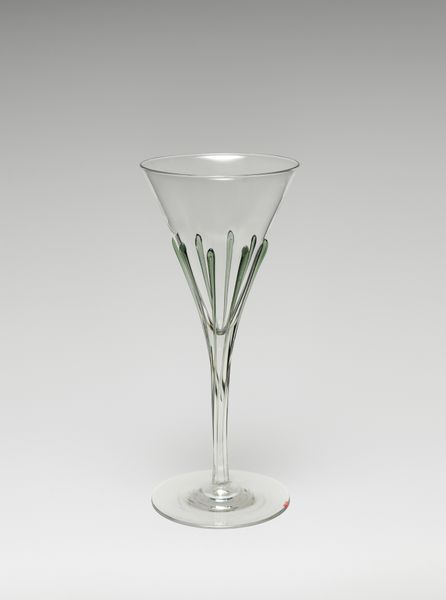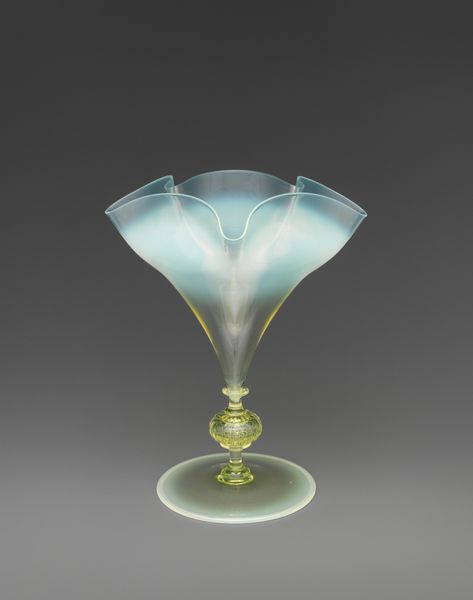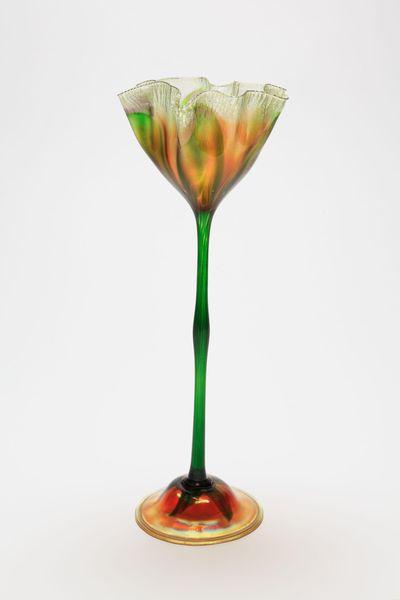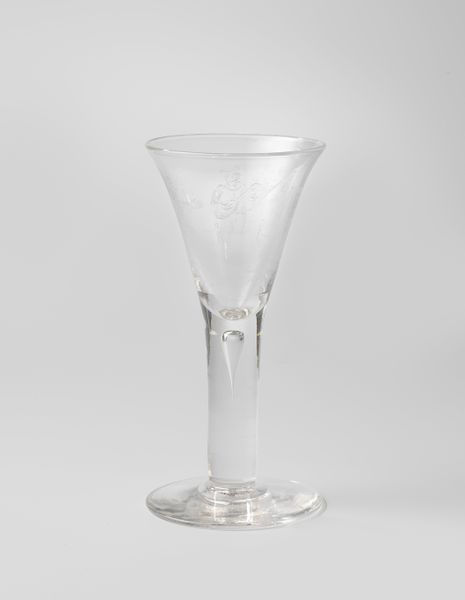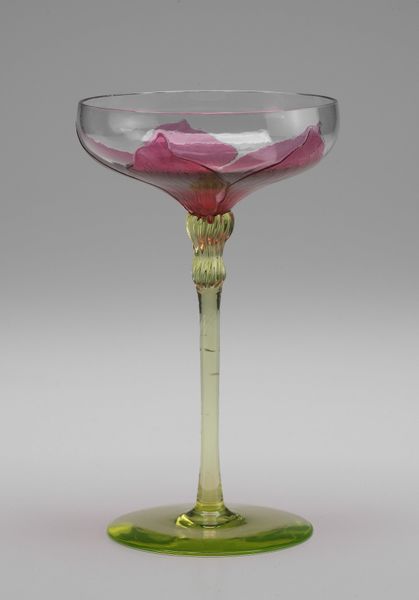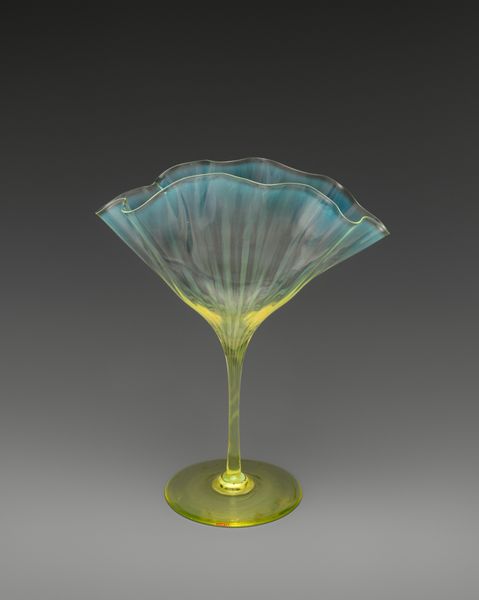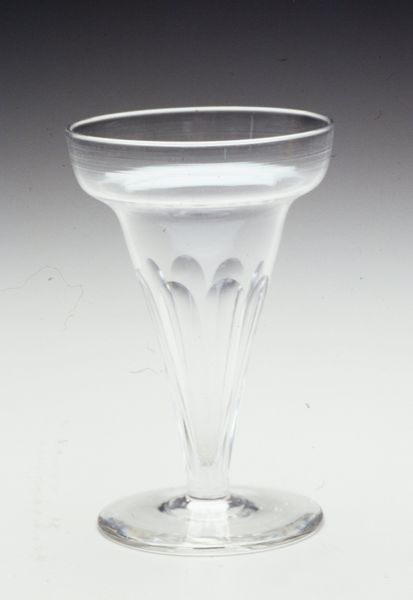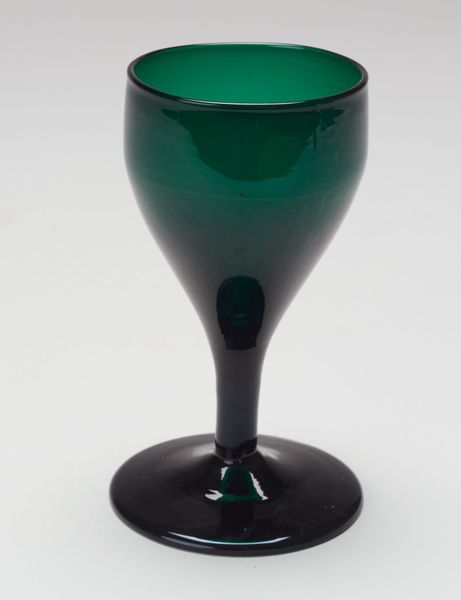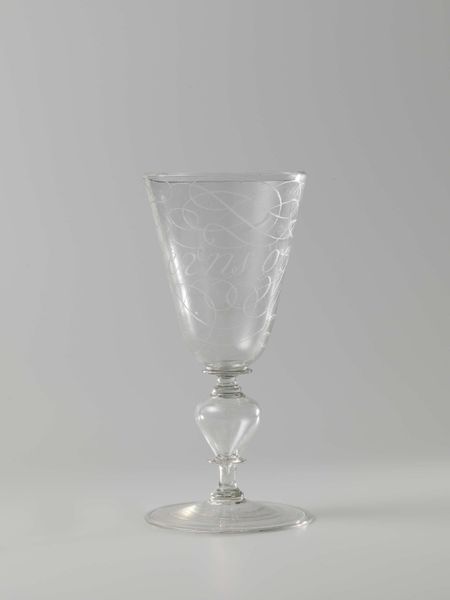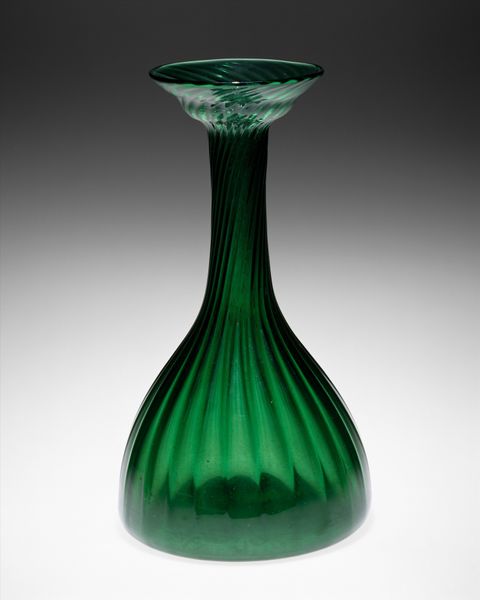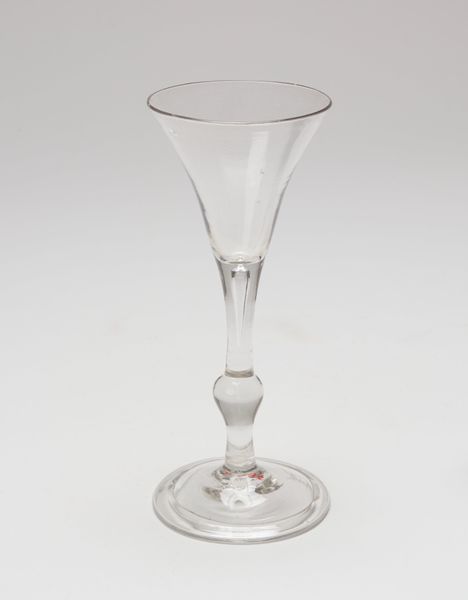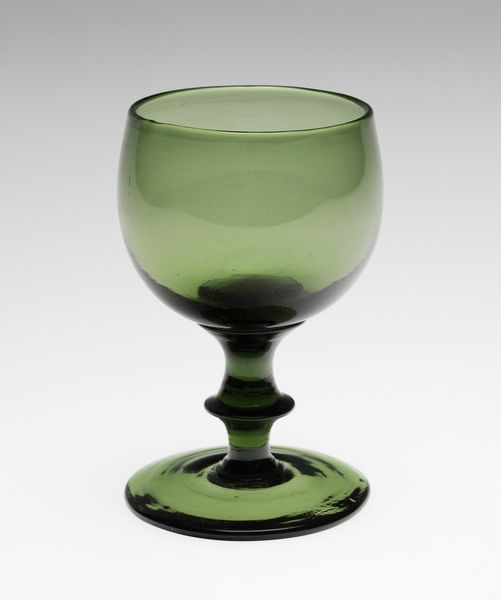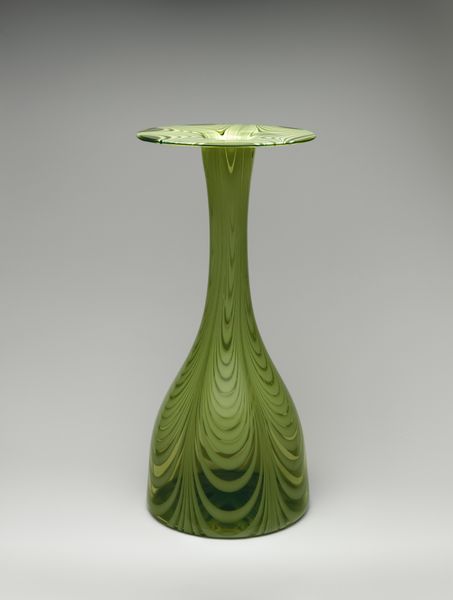
glass, sculpture
#
art-nouveau
#
glass
#
sculpture
#
decorative-art
Dimensions: Overall (confirmed): 10 1/4 × 5 5/8 × 5 3/8 in. (26 × 14.3 × 13.7 cm)
Copyright: Public Domain
Curator: Before us stands a 'Tall-stemmed Vase', crafted between 1885 and 1895 by the skilled hands of Harry Powell. This delicate sculpture, composed of glass, exemplifies the Art Nouveau style. Editor: It has such a wonderfully ethereal quality! The elongated stem and the wavy rim create a sense of effortless grace, almost like a flower suspended in mid-bloom. Curator: Indeed, its aesthetic aligns with the burgeoning artistic sensibilities of the late 19th century, a time when artists and designers were consciously turning away from industrialization. The Art Nouveau movement championed natural forms and organic motifs, striving to imbue everyday objects with artistic merit. Powell and others believed in the democratizing power of beauty through functional art, envisioning pieces like this adorning bourgeois homes. Editor: And look at how the light plays with the translucence of the glass! The slight variations in the green hue are just captivating. Powell clearly understood how to manipulate this medium to evoke feelings of serenity and tranquility. The upward movement suggested by the form is very uplifting too. Curator: The intentional fragility of glass was significant in its historical moment. The rise of consumer culture coupled with the shift in class structure affected artistic endeavors such as decorative arts. In Art Nouveau, such works provided an antidote to industrial production as they embodied an aspirational sensibility. Editor: Do you think its original function impacts how we perceive its beauty today? As in, does knowing it's a vase—something intended for use—alter our engagement with it as an aesthetic object? Curator: I think its perceived functionality situates its public role as decorative art. Whether on a dining table or mantle, it was designed to be admired in daily use rather than behind museum barriers. Editor: Seeing this piece displayed here does encourage one to appreciate its intricate, balanced form. And personally, this gives me some insight into the socio-historical forces operating at the time. Curator: Ultimately, I see the artist celebrating craftsmanship and the beauty inherent in the natural world. Editor: Absolutely. Its ability to elicit emotions and spark a renewed interest in the aesthetic of forms really contributes to its value.
Comments
No comments
Be the first to comment and join the conversation on the ultimate creative platform.
